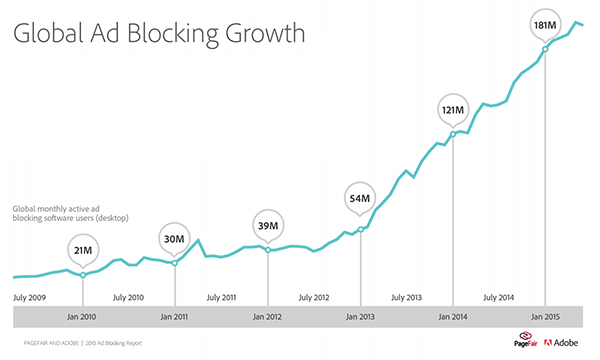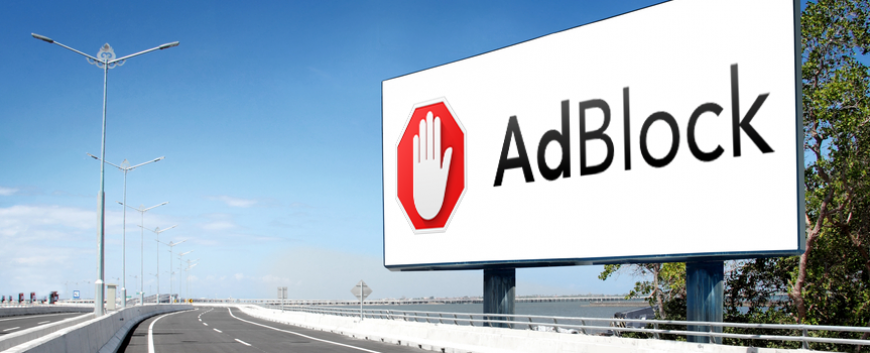How Brands Can Overcome the Devastating Effects of Ad Block
- Posted on Jul 08, 2016
- Rachel Magnus
- 0 Comments
In a world where engagement has become a major challenge, ad block software is yet another obstacle limiting a brand’s ability to reach consumers. Businesses that rely on ad revenue are already taking considerable hits, including publishers, brands and advertising agencies alike.
According to eMarketer, ad block usage will increase to 69.8 million people in the U.S. alone this year. This means that more than 25% of internet users in the U.S. will be using an ad blocker. A number that is expected to grow to 86.6 million people in 2017.
In other words, across social and digital channels, brands are paying money for ads that may never be seen — a problem that is only getting worse.
Imagine this — your brand has worked relentlessly for months on a campaign that you finally released to the public. With the rise of ad block, 25% of your target audience, and your investment, is lost right off the bat. So, how can brands prevent this?

Source: The Cost of Ad Blocking
Fortunately for brands and content publishers, there are a few options that have shown to be strategically effective in maintaining advertising revenue. Some of the most popular methods adopted by large publishers and brands include:
- Website whitelisting: Advertisers and publishers can apply to be whitelisted by ad block software tools (such as the popular Adblock Plus) to have their ads seen by readers. Publishers must meet a list of criteria provided by Adblock Plus for their ads to be considered acceptable. According to The Financial Times, companies such as Google, Amazon, Microsoft and Taboola have all paid Adblock Plus to whitelist their websites so that their advertisements can be seen.
- Reader opt in: Instead of paying to whitelist a website, some publishers, such as Forbes ask readers to opt into seeing their ads voluntarily. When publishers do this, their message asking readers to whitelist their content can also be blocked from browsers using Adblock.
- Subscriptions: Publishers can choose to charge a daily, weekly, monthly, or annual membership fee to readers for high quality content. Those that target a niche are usually more successful in gaining subscribers. Since readers are paying for the content, the advertisements will show regardless of ad block usage.
- Native content: Brands can also elect to implement advertisements as native content. Ad block software has difficulty recognizing native content as something that is paid for by a brand, and therefore it is not blocked as an ad. Native advertisements are becoming more popular in the online advertising world. According to a report by Business Insider, native advertising makes up 56% of the total U.S. display ad revenue and is expected to increase to 74% by 2021.
Ultimately for advertisers to be successful, they need to protect their campaigns and make sure they are seen by their targets—using one or more of these successful approaches.
Snips implements native content strategies that allow our influencer-driven campaigns to be impervious to ad blocking software. Snips Social Impact campaigns produce high-impact display and video advertisements natively across all browsers and platforms, while Social Buzz and Social Sweeps campaigns produce native branded content across all social media. And since all three campaigns integrate natively across web and social media, they can reach a much broader audience through influencers and organic conversations.
Above all, the most effective advertisements are those that engage people—not disrupt them. If an advertisement surpasses ad block, yet does not resonate with the consumer, the message and investment are lost. The most powerful thing a brand can do is give the reader a reason to pay attention to them. Perhaps this would bring an end to ad blockers.











